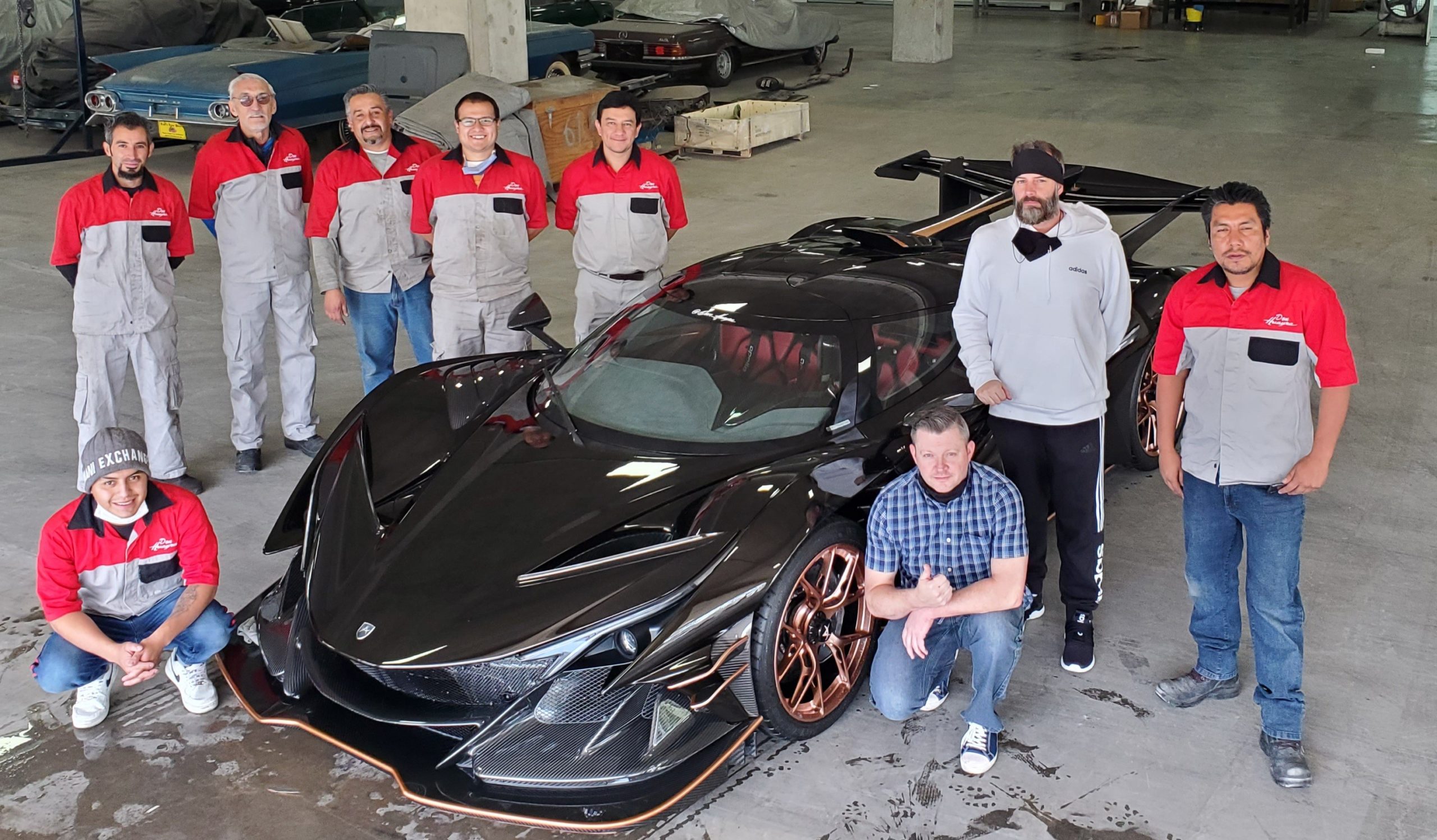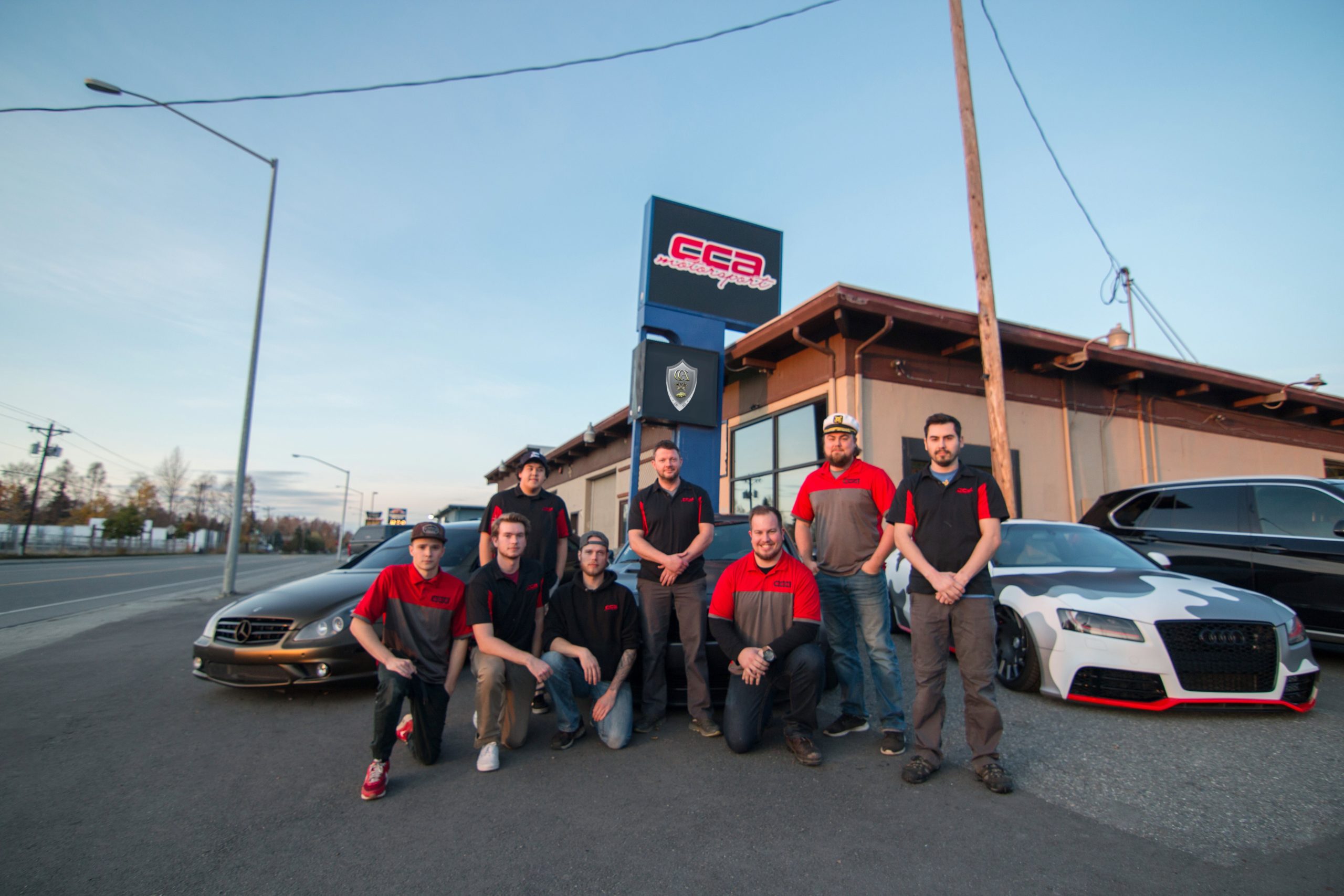Creating a Self-Sustaining Shop

THE SHOP Magazine contributor Arun Coumar caught up with Chris West, also known as Clear Bra Chris on Instagram, to learn about how he built Anchorage, Alaska-based CCA Motorsport and then transformed his shop owner role to something completely unique.
West founded Clear Car Armor, the predecessor to his shop CCA Motorsport, in 2002 after seeing a demand for clear bra protection film in Anchorage, Alaska. After 15 years running his shop, he took a step back and began doing specialized PPF Installs, installer training and business coaching for other protective film shops around the world. He is a recognized figure in the industry for his business success, his willingness to help out wherever it’s needed and for his skill as an installer–West is a 5-time winner of the XPEL Install Competition and the 2019 winner of the International Window Film Conference Install competition. He can usually be found on a plane to the next shop, where he is regularly wrapping one-off cars or training a team of installers.
CCA Motorsports offers paint protection film, tinting, vinyl wraps, ceramic coating, detailing and some performance work through a team of nine multi-skilled staff.
Q: Chris, how do you spend your time these days?
Chris West (CW): I split my time between specialized PPF installs and PPF installer training and business consulting for other shops all over the country.
Q: How long have you been doing that?
CW: Two and a half years.
Q: What were you doing before that?
CW: I was owner-operator at CCA Motorsport in Anchorage Alaska. Now I’m just the owner.
Q: Let’s talk about the transition from working as a shop owner-operator to an absentee shop owner. Was there one thing that made you think “yes, now is the time to make the change?”
CW: It was always my goal to treat CCA Motorsport like a business that I could either make into something self-sustaining or sell. 15 years into running the shop, I noticed my team voicing their thoughts on my management style. I would be showing or telling them how to do something the right way, and they would say “of course it’s the right way, because it’s your way.” I began to see that my managers were struggling to make decisions for fear of doing it differently from how I would want it.
In the slow season of that year, I took a couple of weeks off. I wasn’t reachable by phone, so I was relying on my team to make sure everything ran smoothly. I came back to find that it was the best two weeks we’d ever had, for a slow season.
I realized after that vacation that I wasn’t letting my guys reach their full potential. I was micromanaging them like crazy. I started spending less time in the shop and just tracking our revenue, profit, customer reviews and employee feedback to make sure everything was running smoothly.
Q: How did you know your team was ready to take over managerial responsibilities?
CW: I had been working side by side with my managers for a long time and always really emphasized with them that the customer is always right. That’s our shop culture here. If we had some downtime, I always liked to prompt them, asking “so what would you do in this situation?” and then listen and guide them in the direction of the shop culture.
It helped also that I never really took on the face of the shop with customers. I was always in the back installing, and I gave one of my front guys the title of General Manager, so that customers would know they were talking to someone with authority to make decisions on their behalf.
Another helpful piece of our company culture is that it’s okay to make mistakes. Learn from your mistakes and improve for the next time. If someone starts making the same mistake multiple times, then it’s time to start looking at whether they’re the right fit for that role. My current manager actually started as a tinter, but he’s a natural with customers and it ended up that a front role fit him perfectly.

Q: Was there anything else you did to prepare your team to take over managerial responsibilities?
CW: When showing someone how to do something or correcting someone else’s mistake, I would always explain why I was doing what I was doing. Over time, this built up a natural decision-making muscle in my guys – they learned the reasons why I did everything that I was doing, and it helped them to make choices by themselves without any guidance from me because they knew the reasons behind the right choice.
Q: Was there anything that caused you to hesitate on believing you could leave and trust your team to handle everything?
CW: Sure, there’s always the attachment that I have to my shop. It’s my baby, I built it, and it’s hard to hand it off to others and trust them to take care of it for you.
Q: What helped you push through that attachment?
CW: We put tons of procedures and systems in place to make decision making easy. My team is fully prepared to make lots of independent decisions, which really takes me out of the equation in running the shop.
Q: What elements should other shop owners be looking for to determine when is the right time to start detaching from the day to day?
CW: When you have nothing else to do but micromanage people and try to interject yourself to work in the business, you’re running away from the business. At that moment it’s time for a change. If your goal is to make your business self-sustaining, look for those sorts of indicators.
You’ll also have to accept that your team isn’t going to be perfect. Take some time to let go of the reins and then guide, rather than handle. Push your team to do things without your supervision or review and take ownership of their work. If you can’t trust them, you may need to hire someone else to make sure everyone is in the proper role. Your overhead will go up as you outsource and hire for every hat you’re wearing but remember what your end goal is and structure the business accordingly.
Q: What is one piece of advice you want to give to shop owners looking to undertake a similar transition out of their owner-operator role?
CW: Let your baby go. I like the analogy: imagine you were the General Manager of an NFL team. If your head coach wasn’t doing a good job, you wouldn’t go down there and coach the game yourself. You’d go hire a new head coach. That’s ultimately the mindset you’re looking to put yourself in. You can’t keep being hands-on if you want to take a step back.
This transcript was edited for length and clarity.



